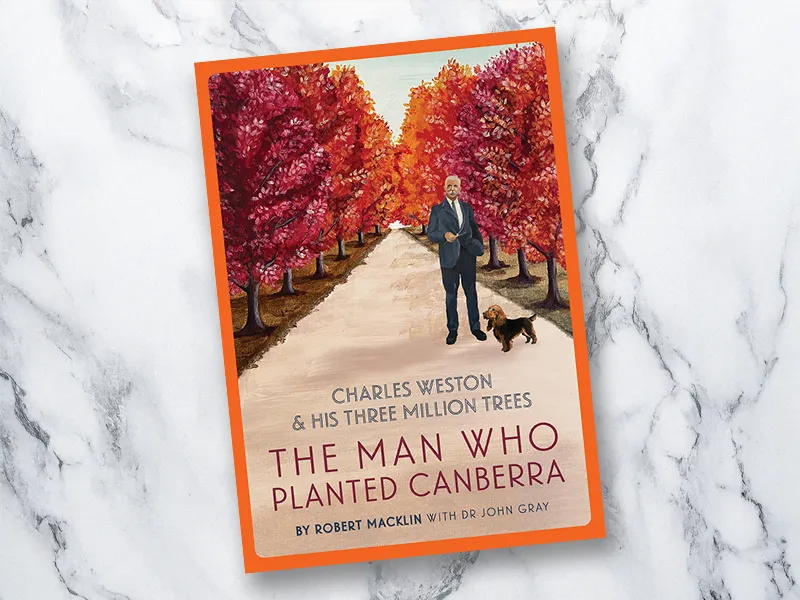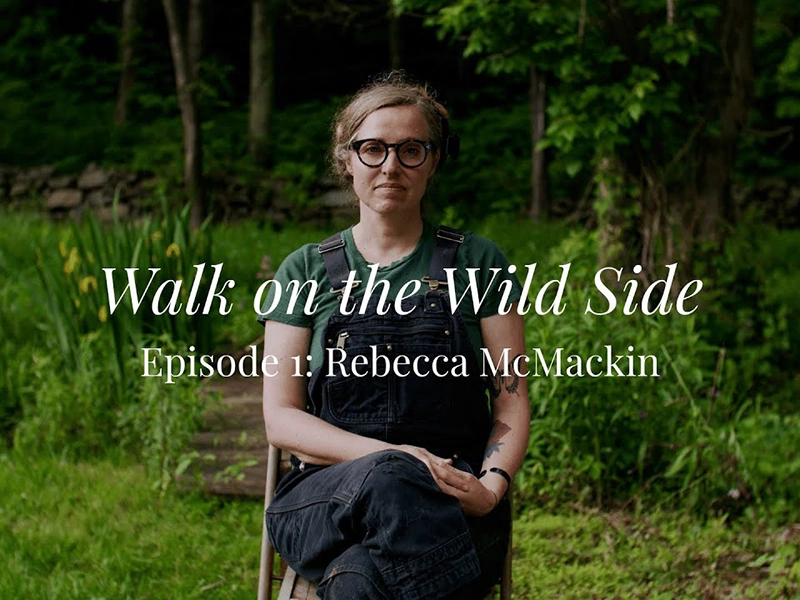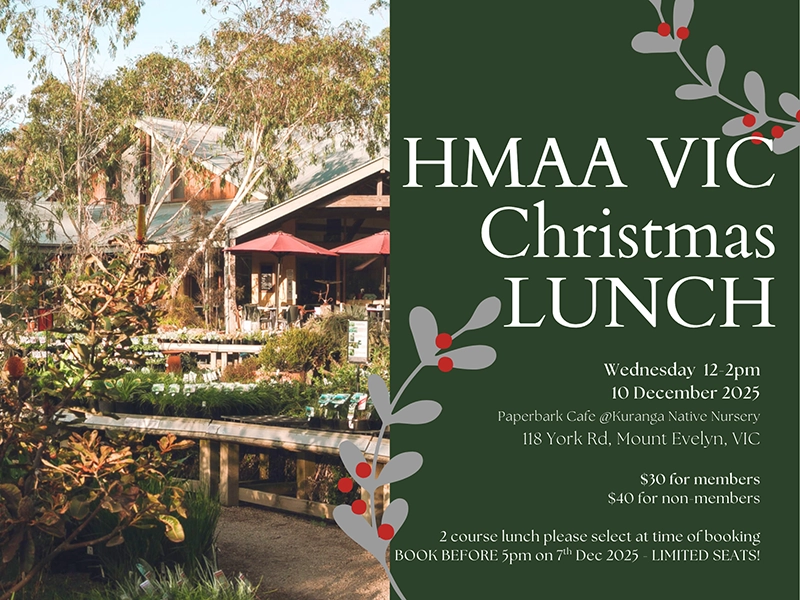Reviewed by Gabrielle Stannus, Editor, Hort Journal
When completing my Master of Urban Horticulture at the University of Melbourne, I took an elective in ‘History of Landscape Architecture’. In that subject, I learnt about the role that Walter Burley Griffin and Marion Mahoney Griffin played in the development of our national capital. Missing from this course content, however, was any discussion about the stupendous effort undertaken by horticulturist Charles Weston at the same time to reafforest and plant out this new city. Author Robert Macklin describes Weston’s visionary contribution to our capital and indeed country in his new book, The Man Who Planted Canberra: Charles Weston and his three million trees.
Macklin details Weston’s life from his birth in 1866 in Poyle, a small hamlet north of London, England to his death in 1935 in Sydney, Australia after a long and successful horticultural career in both countries. Whilst Weston was not quite a ten-pound pom (his arrival into this world came a little early for that!), he was most definitely not born with a silver spoon in his mouth. As a child growing up in Victorian England, Weston learnt to garden to supplement his family’s meagre income. He then became a gardening apprentice, firstly at Poyle Manor, and then Ditton Park, before being transferred to Drumlanrig Castle in the Scottish borderlands, where he was taken under the wing of David Thomson, one of Britain’s most influential head gardeners at the time.
Having reached what was essentially the top rung of the horticultural career ladder available to him at that time, Weston sought new professional opportunities abroad. He arrived in Sydney in 1896, becoming Head Gardener at Admiralty House, Kirribilli before setting his sights on Canberra, the capital city in the making. He ended his career in this city, having experimented with and planted more than three million native and exotic trees and shrubs in and around its boundaries.
The Man Who Planted Canberra is meticulously researched, the groundwork for which is underpinned by a thesis written by the late Dr John Gray, hence his co-credit with Macklin. This easy-to-read book does not quite contain the same style of ‘look at me’ ‘plant porn’ found in contemporary publications. Instead, the text is interspersed with beautiful artwork, botanical sketches, historic photos, and superb plans. A veritable feast for the eyes, as well as the brain.
Some editors might argue that the content could have been summarised to suit the shorter attention spans of modern readers. The text includes many sections of quotes in the first person, which I think give this book its point of difference. Aren’t we all just a little tired of reading text ground down to its bone?
Why should you read this book?
If you are in any way politically-minded, then there is plenty to keep you interested in these pages as Macklin exposes the intrigue behind the development of the nation’s capital. Indeed, reading this book makes you want to visit Canberra. Yes, you read that correctly! Territorian tourism operators – take note.
The only time I have visited Canberra was as an infant travelling in a sidecar with my mum as my dad took us and his Triumph on a road trip many years ago. But that is a story for another day! Suffice to say that is quite some time since I have thought of visiting our capital. After reading Macklin’s book, I am already looking for excuses to visit this city so I can indulge in a little horticultural history tour or two. Many of Weston’s original plantings still exist, including at the Westbourne Woods arboretum, which is now encompassed by the Royal Canberra Golf Course.
Landscape architects and designers, urban horticulturists, and city planners could all learn a lesson from Weston. With his mix of indigenous and exotic plantings, he created a garden city likely to adapt and evolve to the impacts of anthropogenic climate change. Understanding Canberra’s harsh climate, he knew that that city’s occupants did not need shade during winter but would benefit from it during summer, hence his careful selection and placement of deciduous trees in key locations. In this time of climate change, Canberra is in a relatively good position compared to other cities like Melbourne and Sydney, because it has a huge diversity of species planted in its landscapes. Some of these trees and shrubs will like a warming area and likely survive into the future.
Finally, garden history enthusiasts will love The Man Who Planted Canberra. If you are in any way interested in Australia’s gardening history, this book should be in your library. In the words of a more contemporary Australian* also noted for his love of history, albeit Egyptian, “Do yourself a favour!” and read this book.
Note: You can read my interview with author Robert Macklin in Hort Journal Australia (‘The Man Who Planted Canberra’, September 2025).
*Molly Meldrum, former host of ABC TV’s Countdown.
………………………………………………………………………………………………………………………
The Man Who Planted Canberra: Charles Weston and his three million trees by Robert Macklin with Dr John Gray (2025)
RRP: AU $39.99
ISBN: 9781922507778
Publisher: National Library of Australia (NLA) Publishing (240 pages)
………………………………………………………………………………………………………………………
Image credits
- Front cover (Image: National Library of Australia)





